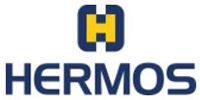
HERMOS AG
HERMOS AG is a leading company in the field of industrial automation and control systems. With a focus on delivering advanced solutions, HERMOS AG offers a wide range of products and services to optimize manufacturing processes. Their portfolio includes programmable logic controllers (PLCs), human-machine interfaces (HMIs), and supervisory control and data acquisition (SCADA) systems. These solutions enable businesses to streamline operations, improve productivity, and enhance overall efficiency. HERMOS AG's expertise extends across various industries, including automotive, pharmaceuticals, food and beverage, and energy. The company's commitment to innovation is evident in their continuous development of cutting-edge technologies that adapt to the evolving needs of their customers. With a strong emphasis on reliability and customer satisfaction, HERMOS AG has established itself as a trusted partner for businesses seeking high-quality automation and control solutions.
RFID Reader Modules
Results:
2
Results remaining:2
Applied Filters:
HERMOS AG
RFID Reader Modules
RFID reader modules are essential components that require additional elements to be fully functional. These modules typically consist of an unfinished unit that needs to be equipped with memory, a power supply, an antenna, a processor, and a protective case. Here is a detailed description of the characteristics that define RFID reader modules: 1. Type: RFID reader modules can be categorized into two primary types: Read-only: These modules are designed solely for reading information from RFID tags. They do not have write capabilities. Read/write: These modules have the ability to both read information from RFID tags and write data to them. 2. Frequency: RFID reader modules operate within specific frequency ranges, which determine the compatibility with RFID tags. The frequencies can vary from 125 kHz to 960 MHz, covering different RFID standards and applications. 3. Interface: RFID reader modules offer various interface options to establish communication with external devices. The available interfaces include: Bluetooth: Allows wireless communication between the RFID reader module and other Bluetooth-enabled devices. Ethernet: Enables connectivity through an Ethernet network, facilitating data transfer over a local area network (LAN). I2C: A serial communication interface that enables connection with compatible devices using the Inter-Integrated Circuit (I2C) protocol. RS232: A popular serial communication standard that allows communication over short distances using a standard DB9 connector. RS422: A differential serial communication interface that provides greater noise immunity and longer transmission distances compared to RS232. RS485: A multidrop serial communication standard that allows multiple devices to communicate over a single bus. TTL: Transistor-Transistor Logic (TTL) is a common voltage level used in digital circuits. UART: Universal Asynchronous Receiver-Transmitter (UART) is a serial communication interface commonly employed for asynchronous communication. USB: Universal Serial Bus (USB) provides a widely supported interface for connecting devices to computers or other host systems. 4. Package/Case: RFID reader modules come in different package styles or cases, which determine their form factor and protection. The package options can vary depending on the manufacturer and specific requirements of the application. RFID reader modules serve as the core components in RFID systems, providing the necessary functionality to read and write data from RFID tags. These modules offer flexibility in terms of frequency compatibility, interface options, and packaging, allowing for customization and integration into various applications.


